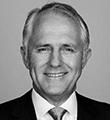PRIME MINISTER:
Thank you very much Aunty Jannette for always a very warm Welcome to Country.
Mr Speaker, Tony Smith, Deputy President, Ministerial and Parliamentary colleagues, the Leader of the Opposition, members of the diplomatic corps, representatives from Cricket Australia, the PM’s XI Australian Cricket Team and Sri Lankan Team, Papua New Guinea Cricket Team, Canberra XI Cricket Team.
We are all here to welcome you, Prime Minister Wickremesinghe, your wife Professor Maithree Wickramasinghe. Welcome, it’s wonderful to have you here tonight. We are delighted that we are hosting you as we celebrate the strong bond between our two nations. A bond that has endured and grown stronger for over 70 years.
In the early months of 1947, Colombo — a bustling port city, gateway to an island nation on the cusp of a new era of independence — became the new home of a Tasmanian farmer and former Member of Parliament, Charles Frost.
As Commissioner and then High Commissioner to what was then Ceylon, Frost was sent to oversee a new chapter in the relationship between our two nations.
A year later, Ceylon reciprocated and, after Washington, London and New Delhi, Canberra became, Mr Prime Minister, your nation’s fourth overseas mission.
The diplomatic partnership, and the friendship, is the continuation of a bond that, in reality, goes back much further.
In the late nineteenth century, the first of many waves of Sri Lankan immigrants ventured southwards to try their luck in the goldfields of New South Wales and Victoria, to dive for pearls off the West Australian coast, and work the cane fields of northern Queensland.
In the opposite direction, Ceylon was a regular port of call for sailing ships, then steam ships and later ocean liners travelling between Australia and Europe. Australian cricket teams travelling to England to play in the Ashes also stopped off in Colombo.
In the 1950s, Colombo was also a port of call for early flights operated by Qantas on the famous ‘Kangaroo Route’ between Sydney and London. For many Australians, Colombo was one of their first encounters with their world beyond their shores.
These beginnings laid the foundation for a firm and enduring friendship.
Today, we are working together to ensure the prosperity and security of our region, on issues from trade to law enforcement, from science to combatting the scourge of people smuggling.
And one of our greatest shared loves, cricket, brings us together again tomorrow, for the Prime Minister’s XI at Manuka. I am delighted to welcome both the Sri Lankan team and the Australian team here this evening.
I want to thank Adam Voges for captaining the Prime Minister’s XI. I don’t want to put too much pressure on him but this will be the third time we have been scheduled to play Sri Lanka and we haven’t won a match yet. I have full confidence in the team and with any luck Darren Lehmann won’t offer me gratuitous advice on my selections.
I also want to welcome the captain of the Sri Lankan team, Upul Tharanga. There are a few scores to settle after Sri Lanka’s 3-0 victory in last year’s test series and Australia’s record-breaking score in the Twenty20 game at Pallekele.
An exhibition of portraits unveiled earlier today features 13 eminent members of the Sri Lankan-Australian community — Australians with great achievements across science, academia, business and the arts.
It is a pleasure to see a few of those faces and many more Australians and Sri Lankans and Sri Lankan-Australians here in three dimensions tonight. There is a great bond, Prime Minister, between our two nations and you see it here. You see it here, the bond between peoples is so strong and we see it here tonight.
The importance of connections between people was one of the founding concepts of the Colombo Plan which, from the early 1950s, brought thousands of South and Southeast Asian students to Australian universities.
Australia currently hosts around 7,600 Sri Lankan students and, over the last three years, we have sent some 200 Australians to study in Sri Lankan institutions under the Australian Government’s New Colombo Plan.
So the big idea of the 1950s is now a big idea of the 21st century. And it’s architect Foreign Minister Julie Bishop is here with us tonight.
This is an investment in people and it’s an investment in the future and it has paid off in the past and continues to do so today, deepening the mutual understanding and building strong relationships between Australians and Sri Lankans.
Looking ahead, our future is one of economic and strategic partnership.
We are collaborators; equals bound by shared interests.
Our two-way trade is up nearly 10 per cent year on year, and in 2016 the value of trade between Sri Lanka and Australia is likely to have ticked over the $1 billion mark for the first time.
This growth is no accident; businesses who see the opportunities are driving it.
Companies like the Australian cattle exporter Wellard, helping to build a fully sustainable domestic dairy industry in Sri Lanka.
Or Victoria’s William Angliss Institute, which has teamed up with the Colombo Academy of Hospitality Management to deliver world-class hospitality training to Sri Lankan students — supporting the critically important tourism sector.
There is significant potential to further expand our commercial ties in areas including energy, infrastructure, IT, and business services — fields where Australia leads the world.
Prime Minister, last month marked two years since the formation of your national unity government. We stand with you, and President Sirisena as the Unity Government embarks on its important political, economic and social reforms.
Australia is proud, sir, to have been a firm friend of Sri Lanka these past 70 years and we are excited about what we can, what we will achieve together in our shared future.
Thank you.
[END]

